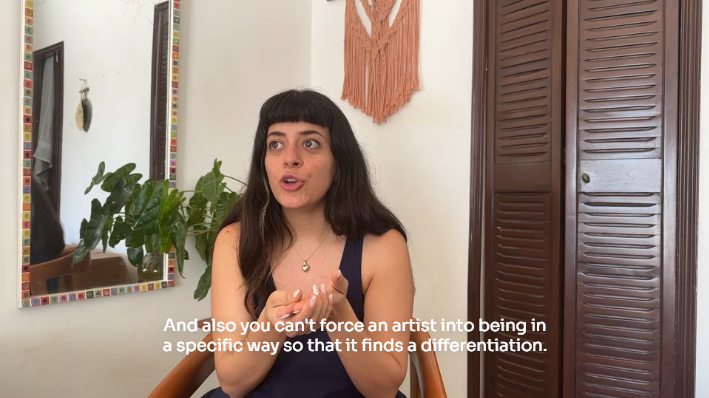Why Marketing Art Feels So Hard and How to Make It Easier
- Sofia Paz Lifrieri
- Jul 11
- 3 min read
Updated: Aug 27
A slower, more human approach to marketing for artists and cultural creators who want to connect without compromising their values.
If you’re an artist or run a cultural project, chances are you didn’t sign up to be a marketing expert. You signed up to create. To express. To move people.
And yet, in today’s world, getting your work in front of the right audience almost always requires some form of marketing, which can feel overwhelming, uncomfortable, or downright unnatural.
The truth is, art doesn’t fit neatly into the traditional rules of marketing. That’s a good thing. But it also means we need a different approach. ✨

Art Is Not a Product
When you market a product like a phone or a backpack, you’re usually solving a specific problem. You emphasize features. You compare it to similar options. You make a case for why this product is the best choice to meet a particular need.
Art doesn’t work like that.
We don’t buy art because we need it in a functional sense. We buy it because it speaks to something deeper. It stirs emotion. It reflects how we see the world, or how we want to see the world. It creates connection.
This kind of value isn’t easy to quantify. That’s part of what makes art marketing more philosophical than transactional. You’re not selling a solution. You’re inviting someone into an experience.

You Don’t Need to Explain Every Piece
One of the most common concerns artists have is, “Do I have to explain everything?” The answer is no.
You don’t have to break down the meaning of every piece you create. But you do need to offer some insight into you—the person behind the work.
What motivates you? What themes do you return to again and again? What matters to you as an artist and as a human being?
Sharing your story helps people understand the why behind your work. That doesn’t mean you have to share your entire life. You can choose what to keep private. But building authentic connection means letting people see something real.

Start Where You Are
Marketing your art doesn’t require a huge budget or a content machine. It requires clarity, consistency, and connection.
If you’re starting out, begin small. Talk to people. Reach out to those who share your values. Look for collaborators. Be present in spaces where others are creating or engaging with work similar to yours. The goal is to connect, not to perform.
And if social media feels like a strange fit, that’s okay. There are many ways to show who you are: writing, newsletters, interviews, art shows, podcasts.
The method should fit you, not the other way around.

Your Audience Is More Than Buyers
In traditional marketing, people are often seen as consumers. But when it comes to art, your audience can become so much more. They can become supporters.
Think about your favorite musician. You don’t support them only because of the product (the song). You support them because of what they represent. You feel connected to their worldview, their energy, their vulnerability. You root for them. You want them to keep going.
That same dynamic is true for artists of all kinds. When someone resonates with your work, they’re often not only buying a piece, they’re also supporting your ability to keep making it.
That support can take many forms: buying a piece, subscribing to your newsletter, joining your Patreon or Substack, telling a friend.
And it all starts with sharing what’s real.

Differentiation Comes From Within
Another trap of traditional marketing is comparison. But in the art world, no two artists are truly in competition. Each person brings something unique. Your job is not to force differentiation. It’s to reveal it.
Competitor research can still be useful, but not in the traditional sense of "how can I stand out against this other person?" Instead, it’s about understanding what already makes you different and bringing that to the surface with clarity and care.

Slower, Deeper Marketing Takes Patience
Building authentic connection takes time. So does understanding your voice, your values, and the kind of audience you want to reach. That’s okay.
This slower approach might not deliver viral results, but it builds trust. It creates long-term relationships. It allows your art and your integrity to lead the way.

Want to hear more?
We go deeper into all of this in our latest episode of The Ethical Brand Podcast. If you’re an artist or cultural creator trying to market your work without selling your soul, this conversation is for you.
You can listen to the episode on your favorite platform, and find us on all socials at @theethicalbrandstudio.
More resources and support available at theethicalbrandstudio.com.



Comments